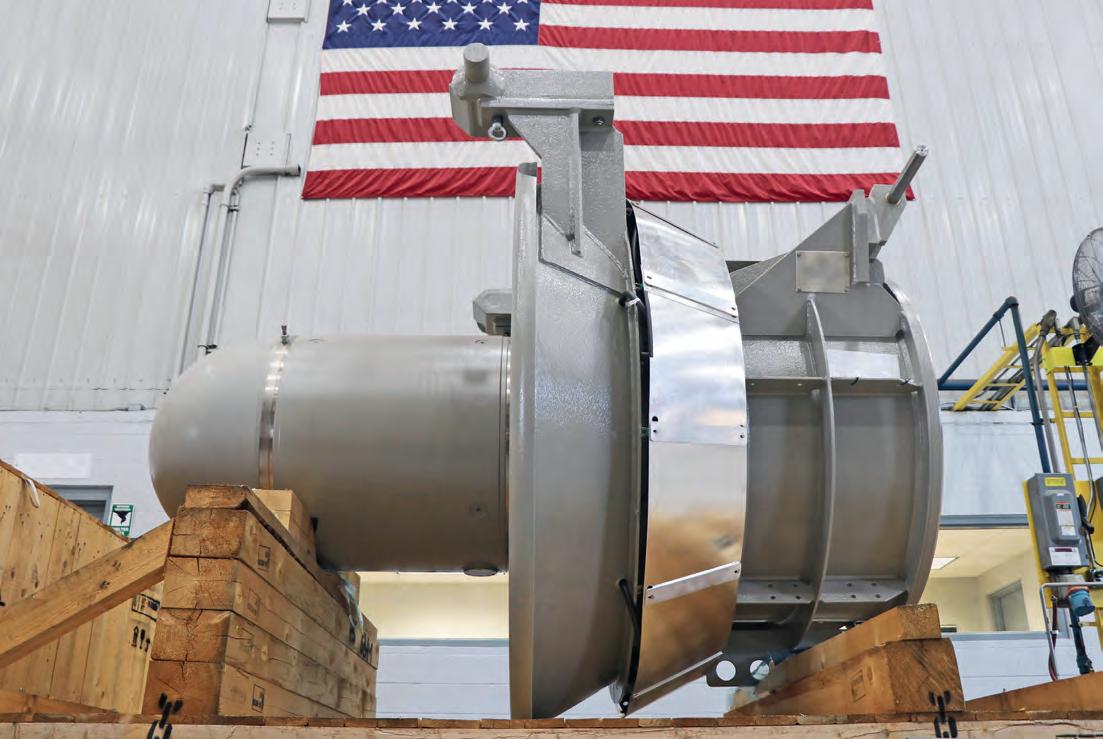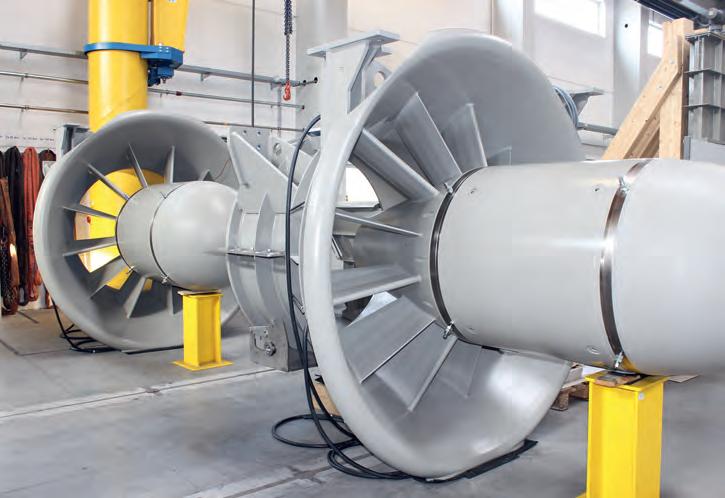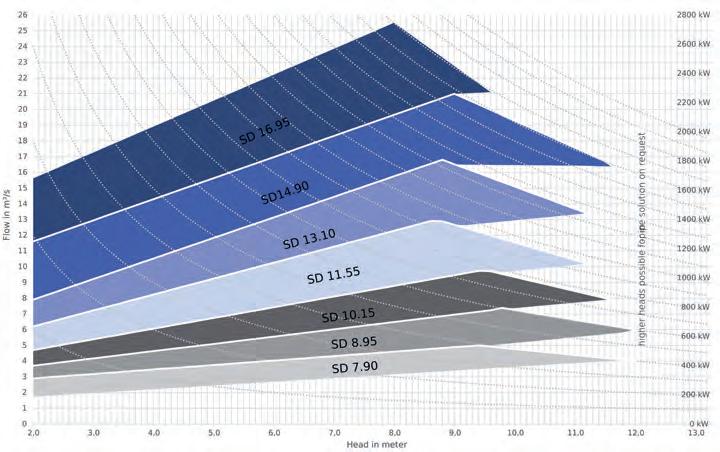
3 minute read
A RENOWN US-UNIVERSITY OBLIGED TO CARE FOR THE PLANET, CHOOSES VOITH HYDRO’S STREAMDIVER UNITS TO REACH THEIR TARGET
from zek HYDRO 2023
by zek Magazin
In October 2022 the University of Notre Dame held a dedication ceremony for their new hydroelectric facility in South Bend, Indiana. Situated on the east side of the St. Joseph river beneath Seitz Park, the 2.5-megawatt facility harnesses the power of the river and is expected to produce about 7 percent of the electricity for campus and offset about 9,700 tons of CO2 emissions annually.
The initial idea to use the dam to generate hydroelectric power goes back to the 1980s. However, up until recently, reviving it was not financially feasible, and too complex. The University of Notre Dame and Voith Hydro needed to work with the Federal Energy Regulatory Commission, Indiana’s Department of Environmental Management, Indiana’s Department of Natural Resources, U.S. Fish and Wildlife, the U.S. Army Corps of Engineers, the city and neighbors to make this project happen. The StreamDiver turbines began delivering electricity to the University of Notre Dame in May of 2022.
STORY OF ST. JOSEPH RIVER
The 206-mile waterway was an important canoe route during pre-industrial times as well as an important source of food and raw materials. Its floodwaters helped to enrich the surrounding soil and contribute to bountiful crops. Later, with the construction of a concrete and timber crib dam and two raceways, it helped to power early industry, including glass and textile manufacturing. This continued into the 20th century, when the river was used to produce hydroelectricity for manufacturing and, later, cooling water for a coal-powered energy plant housed in the present-day Commerce Center. But as industry moved away from the river in search of cheaper and more abundant land, concern for the waterway as an economic asset - not to mention an environmental resource - faded, with devastating consequences. At the lowest point, it functioned as little more than an open sewer, channeling human, and industrial waste downstream toward Lake Michigan. Over time, the east and west raceways were redeveloped, the former as a whitewater rafting course and the latter as a water feature for the city’s new convention center. The dam became the focal point of a rejuvenated riverfront, with parks, pathways and public art including River Lights, an interactive light sculpture.
Factory Visit In Austria
On the beginning of the project, Paul Kempf, Notre Dame Assistant Vice President for Utilities and Maintenance and his colleagues came to Voith Hydro in Austria. Using detailed assessments and based on the characteristics of the site, StreamDiver turbines were determined to be best suited for this project. Beside other characteristics of this turbine, Voith Hydro’s comprehensive turbine development know-how and its references from all over the world were also decisive factors.
Automatic Operation
Tucked neatly beneath Seitz Park, the facility consists of 10 turbines, each with a 250-kilo-
Technical details
• Turbine type: 10 StreamDiver Units
• Manufacturer: Voith Hydro
• Head: 3.17m
• Flow rate: 9.90m3/s
• Capacity: 0,255MW per unit watt generator and a propeller type runner, stacked two-high across five shafts. Water from the intake tunnels turns the runner, activating the generator and pushing clean, renewable energy up the east bank of the river to campus. The water then flows back to the river at a point just below the dam.
From an operational standpoint, the facility is very much hands off. As water flows into the intake tunnels, it is filtered through a screen, or trash rack, to remove branches and other large debris. Farther along, a second rack removes fine debris, such as leaves. A large arm sweeps the screen to keep it clean. From there, an automated system controls the flow of water to the power house and activates or deactivates the turbines based on water level, which ebbs and floods throughout the year. The turbines use water for cooling and lubrication, avoiding the usage of oil or grease. A bypass tunnel allows
StreamDiver Benefits
• Shortened project time compared with conventional solutions
• Reduction of construction costs up to 40%
• Easy integration into existing weirs or dams
• Minimal operating and maintenance costs
• Ecologically advantages due to water-lubricated bearings and thus oil and grease-free operation
• Water-flooded generators, no leakage risk
• Submerged installation, low visual and acoustic disturbance
• Can be assembled and disassembled very quickly due to underwater plug and suspension wayward fish to travel safely up- or downstream through the facility while avoiding the turbines. Should maintenance become an issue, the turbines can be removed and repaired or replaced via a rail system, with no need to dewater the plant.
Voith Hydro Receives Procurement Partner Sustainability Award From The University Of Notre Dame
For its exemplary innovations, products, and services it contributed to the Notre Dame Hydro project, Voith Hydro has been awarded the University of Notre Dame Procurement Partner Sustainability Award. The project is the largest carbon reduction measure implemented to date as part of the University’s goal to become a carbon neutral campus by 2050.
“The turbines and technology supplied by Voith Hydro played an important role in meeting our project’s sustainability goal. These StreamDiver turbines are also the first such installation in North America and will supply a green energy source that we expect to contribute approximately 7% of the campus’ electricity,” says Shannon Cullinan, Executive Vice President at Notre Dame.

Streamdiver References Worldwide
By reducing complex technology, it was possible to achieve a compact size and an extremely maintenance-friendly and robust machine unit at the same time, which has gradually established itself on the global hydropower market with worldwide references in recent years. Today, StreamDiver units from Austria to Indonesia, from Macedonia to Brazil prove the efficiency of this approach.











